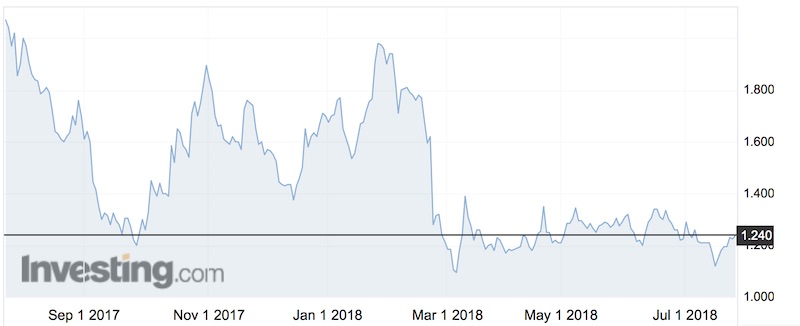Wearables play Catapult reports 26pc jump in full-year revenue but stock slides

Pic: nespix / iStock / Getty Images Plus via Getty Images
Wearables play Catapult has upped its revenue by 26 per cent to $77 million for the year.
But that was at the low-end of the $76m to $81m guidance it delivered in February — which prompted investors to sell down the stock this morning.
The shares ticked down 3 per cent to $1.20 in early Thursday trade. Catapult’s 2014 issue price was 55c, but it went all the way to $4 in 2016.
Catapult (ASX:CAT) — which makes technology that tracks data generated by sportspeople — has had a somewhat bumpy ASX ride since listing in 2014. Its share price has dropped by around 40 per cent over the last 12 months alone.
However, when releasing its quarterly cash results and a snapshot of its full-year numbers this morning, the company told investors it was squeezing more cash out of its elite wearables segment.
These products, including the OptimEye GPS performance monitors, generated $34 million in 2018, up 29 per cent on the previous year.
Annualised recurring revenue from its wearables subscriptions were also up 29 per cent.
>> Read our guide to ASX stocks in the wearables space
Much has been written about the outlook for the wearables market: some industry observers insist the market has been a disappointment, though research from IDC suggests it’s primed for double-digit growth over the next five years.

For the June quarter, Catapult banked $18.8 million in customer receipts for a positive operating cash flow of $1.5 million.
That adds up to $77 million in cash receipts for the year and net cash of $6.4 million after expenses.
The company had $31 million in cash in the kitty at the end of the quarter. The hefty chunk of cash remains after Catapult successfully raised $25 million from institutional investors in March through a placement to further develop its elite wearables range.
It expects to spend $23 million this next quarter.
- Subscribe to our daily newsletter
- Bookmark this link for small cap news
- Join our small cap Facebook group
- Follow us on Facebook or Twitter
UNLOCK INSIGHTS
Discover the untold stories of emerging ASX stocks.
Daily news and expert analysis, it's free to subscribe.
By proceeding, you confirm you understand that we handle personal information in accordance with our Privacy Policy.








